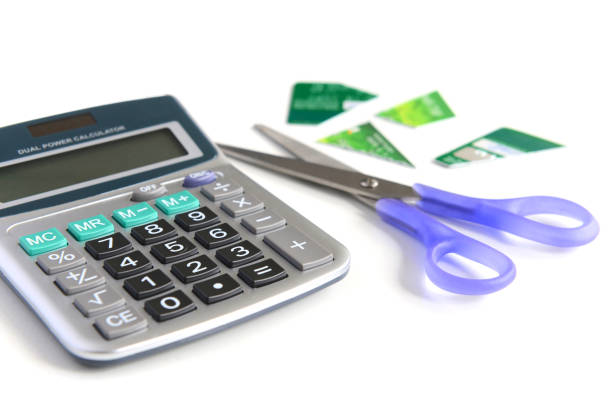 The peril of overextended personal debt is often not a sudden plunge into financial chaos but a gradual, almost imperceptible descent fueled by a phenomenon known as lifestyle inflation. This subtle process occurs when increases in income are met with corresponding increases in spending, creating a cycle where financial progress is stifled and vulnerability to debt is heightened. As earnings rise, the temptation to upgrade one’s standard of living—a larger apartment, a newer car, more frequent dining out—becomes powerful, framed as a reward for hard work. Yet, this expansion of lifestyle quietly erodes the very foundation of financial security, transforming potential savings into obligatory expenses and leaving no buffer for unforeseen circumstances.The link between lifestyle inflation and overextension becomes starkly clear when an emergency arises. Without a significant gap between income and expenses, any unexpected event—a medical bill, a car repair, a job loss—forces a reliance on credit to maintain the newly established standard of living. High-interest debt accumulates not because of irresponsible extravagance, but because of a normalized pattern of spending that leaves no room for error. The result is a precarious financial position where debt payments consume a growing share of monthly cash flow, reducing flexibility and creating a stressful, paycheck-to-paycheck existence even at higher income levels.Breaking free from this cycle requires a conscious shift in mindset. It demands recognizing that true financial well-being is not defined by the ability to spend, but by the capacity to withstand shocks and build future security. Combating lifestyle inflation involves intentional budgeting, where raises and bonuses are directed toward debt reduction and savings before lifestyle upgrades are even considered. It means valuing financial resilience over fleeting luxuries and understanding that every dollar allocated to debt service is a dollar not invested in one’s future.Ultimately, overcoming the duo of lifestyle inflation and overextended debt is about reclaiming control. It is a commitment to aligning spending with deeply held values rather than external pressures or momentary desires. By resisting the creep of unnecessary expenses, individuals can transform their financial trajectory, replacing the anxiety of overextension with the confidence that comes from stability, security, and the freedom to choose a life unburdened by debt.
The peril of overextended personal debt is often not a sudden plunge into financial chaos but a gradual, almost imperceptible descent fueled by a phenomenon known as lifestyle inflation. This subtle process occurs when increases in income are met with corresponding increases in spending, creating a cycle where financial progress is stifled and vulnerability to debt is heightened. As earnings rise, the temptation to upgrade one’s standard of living—a larger apartment, a newer car, more frequent dining out—becomes powerful, framed as a reward for hard work. Yet, this expansion of lifestyle quietly erodes the very foundation of financial security, transforming potential savings into obligatory expenses and leaving no buffer for unforeseen circumstances.The link between lifestyle inflation and overextension becomes starkly clear when an emergency arises. Without a significant gap between income and expenses, any unexpected event—a medical bill, a car repair, a job loss—forces a reliance on credit to maintain the newly established standard of living. High-interest debt accumulates not because of irresponsible extravagance, but because of a normalized pattern of spending that leaves no room for error. The result is a precarious financial position where debt payments consume a growing share of monthly cash flow, reducing flexibility and creating a stressful, paycheck-to-paycheck existence even at higher income levels.Breaking free from this cycle requires a conscious shift in mindset. It demands recognizing that true financial well-being is not defined by the ability to spend, but by the capacity to withstand shocks and build future security. Combating lifestyle inflation involves intentional budgeting, where raises and bonuses are directed toward debt reduction and savings before lifestyle upgrades are even considered. It means valuing financial resilience over fleeting luxuries and understanding that every dollar allocated to debt service is a dollar not invested in one’s future.Ultimately, overcoming the duo of lifestyle inflation and overextended debt is about reclaiming control. It is a commitment to aligning spending with deeply held values rather than external pressures or momentary desires. By resisting the creep of unnecessary expenses, individuals can transform their financial trajectory, replacing the anxiety of overextension with the confidence that comes from stability, security, and the freedom to choose a life unburdened by debt.
A DMP is a structured program offered by non-profit credit counseling agencies. The counselor negotiates with your creditors to lower interest rates and waive fees, and you make one single payment to the agency, which then distributes it to your creditors.
A PTI below 15% is generally considered manageable. A ratio between 15% and 20% may require careful budgeting. A PTI exceeding 20% is often a warning sign of being overextended, as it leaves a dangerously small portion of income for other living expenses and savings.
The constant anxiety can lead to sleep disturbances, headaches, muscle tension, high blood pressure, and a weakened immune system. The body's prolonged "fight or flight" response takes a significant toll on physical health.
Generally avoid this—it can trigger taxes/penalties and jeopardize your future security. Explore financial aid, negotiation, or low-interest loans first.
An emergency fund is a dedicated savings account with enough liquid cash to cover 3-6 months' worth of essential living expenses, such as housing, food, utilities, transportation, and minimum debt payments, in the event of a financial shock.